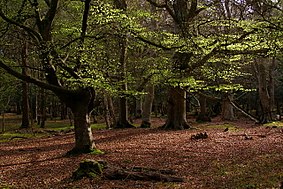World Environment Day Quiz! MCQ
(168).jpg)
Explore key environmental awareness topics with the World Environment Day Quiz! MCQ. This quiz assesses knowledge on historical dates, sustainable practices, and energy conservation, enhancing understanding of environmental impact and global events.
- 1.
When was World Environment Day celebrated for the first time?
- A.
1972
- B.
1974
- C.
1976
- D.
1980
Correct Answer
B. 1974Explanation
World Environment Day was celebrated for the first time in 1974. This global event was established by the United Nations General Assembly to raise awareness and promote action towards environmental protection. It is celebrated annually on June 5th, and each year focuses on a specific environmental theme. The first World Environment Day marked the beginning of a global movement to address environmental issues and encourage sustainable practices worldwide.Rate this question:
-
- 2.
Where will the World Environment Day 2020 be hosted?
- A.
Germany
- B.
Mexico
- C.
Colombia
- D.
Spain
Correct Answer
C. ColombiaExplanation
World Environment Day 2020 will be hosted in Colombia.Rate this question:
-
- 3.
When is Earth Day celebrated?
- A.
April 22
- B.
May 1
- C.
September 5
- D.
November 14
Correct Answer
A. April 22Explanation
Earth Day is celebrated on April 22. This day is dedicated to raising awareness and promoting actions to protect the environment. It serves as a reminder for individuals and communities to take steps towards conserving resources, reducing pollution, and preserving the Earth's natural beauty. The date of April 22 was chosen as it coincides with the spring season in the Northern Hemisphere, a time of renewal and growth, symbolizing the importance of environmental sustainability.Rate this question:
-
- 4.
What type of light bulbs should be used if natural daylight is not an option?
- A.
CFL
- B.
Halogen
- C.
Incandescent
- D.
LED
Correct Answer
D. LEDExplanation
LED light bulbs should be used if natural daylight is not an option. LED bulbs are energy-efficient and have a longer lifespan compared to other types of bulbs. They produce a bright and natural-looking light that closely resembles daylight. LED bulbs also do not emit heat, making them safer to use. Additionally, LED bulbs are available in a variety of color temperatures, allowing users to choose the most suitable lighting for their needs.Rate this question:
-
- 5.
Is [Appliances that are turned off don't use any electricity] true or false?
- A.
True
- B.
False
Correct Answer
B. FalseExplanation
This statement is false. Appliances that are turned off can still use a small amount of electricity, known as standby power or vampire power. Many appliances have features like clocks, remote controls, or instant-on capabilities that require a small amount of electricity to operate even when the appliance is not in use. This standby power consumption can add up over time and contribute to energy waste and higher electricity bills.Rate this question:
-
- 6.
Is [It is better to leave a lamp with a compact fluorescent light on than to turn it on and off several times a day] true or false?
- A.
True
- B.
False
Correct Answer
B. FalseExplanation
Leaving a lamp with a compact fluorescent light on for extended periods of time can actually be more energy-efficient than turning it on and off frequently. Compact fluorescent lights use more energy when they are initially turned on, so if the lamp is going to be used again within a short period of time, it is better to leave it on. However, if the lamp will not be used for an extended period of time, it is more energy-efficient to turn it off. Therefore, the statement is false.Rate this question:
-
- 7.
How much percentage of the World's water is available for human use?
- A.
Less than 1%
- B.
3-5%
- C.
5-10%
- D.
11%
Correct Answer
A. Less than 1%Explanation
Less than 1% of the world's water is available for human use. This is due to the fact that the majority of the Earth's water is saline and found in oceans, making it unfit for human consumption or use. The remaining freshwater is mostly locked in ice caps and glaciers, leaving only a small fraction accessible for human needs such as drinking, agriculture, and sanitation. Therefore, less than 1% is the correct answer as it accurately reflects the limited availability of freshwater for human use.Rate this question:
-
- 8.
One bus can carry as many people as how many cars?
- A.
5
- B.
10
- C.
40
- D.
150
Correct Answer
C. 40Explanation
A bus can carry more people than a car, so the number of cars required to carry the same number of people as one bus would be more. Out of the given options, 40 is the closest number to the capacity of a bus. Therefore, one bus can carry as many people as 40 cars.Rate this question:
-
- 9.
How much has the average global temperature risen since 1880 (in F)?
- A.
0.19
- B.
1.06
- C.
1.69
- D.
6.09
Correct Answer
C. 1.69Explanation
The average global temperature has risen by 1.69 degrees Fahrenheit since 1880. This increase in temperature is a significant indication of global warming and climate change. It highlights the long-term trend of rising temperatures and the impact of human activities on the Earth's climate system. The 1.69-degree rise in temperature emphasizes the urgent need for mitigation and adaptation strategies to address the adverse effects of climate change.Rate this question:
-
- 10.
What is known as the Sixth Extinction?
- A.
The fact that there are six major species in the world today that are facing the threat of extinction
- B.
The sixth species that became extinct
- C.
The sequel to the movie "The Fifth Element"
- D.
The current period of time where species are disappearing at an extreme rate
Correct Answer
D. The current period of time where species are disappearing at an extreme rateExplanation
The term "Sixth Extinction" refers to the current period of time where species are disappearing at an extreme rate. This phenomenon is characterized by a significant loss of biodiversity due to various factors such as habitat destruction, climate change, pollution, and human activities. It is considered the sixth mass extinction event in the history of the Earth, with previous extinctions including the famous event that wiped out the dinosaurs. The correct answer reflects this understanding of the term and its significance in the context of the question.Rate this question:
-
- 11.
How many trees does it take to provide a day's supply of oxygen for 4 people?
- A.
1
- B.
5
- C.
10
- D.
15
Correct Answer
A. 1Explanation
One tree can produce enough oxygen for 4 people in a day. Trees absorb carbon dioxide and release oxygen through the process of photosynthesis. Therefore, it only takes one tree to provide the necessary oxygen for a day's supply for 4 people.Rate this question:
-
- 12.
Where does the majority of Plastic Waste end up?
- A.
Land
- B.
Burnt
- C.
Oceans
- D.
Recycled
Correct Answer
C. OceansExplanation
Plastic waste ends up in the oceans. This is a major issue as it causes pollution and harm to marine life. Due to improper disposal and lack of recycling, a significant amount of plastic waste finds its way into the oceans, either through direct dumping or through rivers and waterways. The accumulation of plastic waste in the oceans has severe consequences for the ecosystem and poses a threat to marine animals, as they can ingest or become entangled in the plastic debris. Efforts are being made to address this problem and reduce plastic pollution in the oceans.Rate this question:
-
- 13.
Is [Climate change affects the gender of Sea Turtles] true or false?
- A.
True
- B.
False
Correct Answer
A. TrueExplanation
Climate change affects the gender of sea turtles. As the temperature of the sand where sea turtles lay their eggs determines the gender of the hatchlings, rising temperatures due to climate change can skew the ratio of male to female sea turtles. Warmer temperatures result in more female hatchlings, while cooler temperatures produce more males. This imbalance can have significant implications for the population dynamics and reproductive success of sea turtles. Therefore, it is true that climate change affects the gender of sea turtles.Rate this question:
-
- 14.
Poaching is a severe threat to elephants. How many elephants are killed for their tusks?
- A.
10/ day
- B.
25/ day
- C.
50/ day
- D.
100/ day
Correct Answer
D. 100/ dayExplanation
Poaching is a severe threat to elephants, with a large number of them being killed for their tusks every day. The correct answer is 100/ day, indicating that a significant number of elephants are being killed daily for their tusks. This highlights the urgent need for conservation efforts to protect these majestic animals from the devastating impact of poaching.Rate this question:
-
- 15.
How much of Earth's land is covered by forest?
- A.
10%
- B.
16%
- C.
31%
- D.
45%
Correct Answer
C. 31%Explanation
Approximately 31% of Earth's land is covered by forest. This means that nearly one-third of the Earth's land area is occupied by forests. Forests are important for maintaining biodiversity, regulating the climate, and providing resources for humans and wildlife. They play a crucial role in carbon sequestration and are vital for the overall health of the planet.Rate this question:
-
Quiz Review Timeline +
Our quizzes are rigorously reviewed, monitored and continuously updated by our expert board to maintain accuracy, relevance, and timeliness.
-
Current Version
-
Mar 22, 2023Quiz Edited by
ProProfs Editorial Team -
Jun 04, 2020Quiz Created by
Laddu Lalith
 Back to top
Back to top




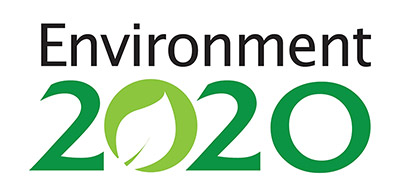
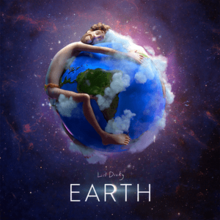

![Is [Appliances that are turned off don't use any electricity] true or false? Is [Appliances that are turned off don't use any electricity] true or false? - ProProfs](https://media.proprofs.com/images/QM/user_images/2755565/8420180870.jpg)
![Is [It is better to leave a lamp with a compact fluorescent light on than to turn it on and off several times a day] true or false? Is [It is better to leave a lamp with a compact fluorescent light on than to turn it on and off several times a day] true or false? - ProProfs](https://media.proprofs.com/images/QM/user_images/2755565/6479182418.jpg)
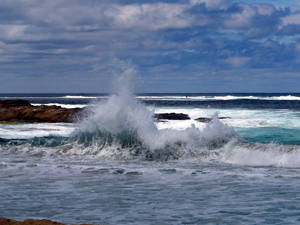



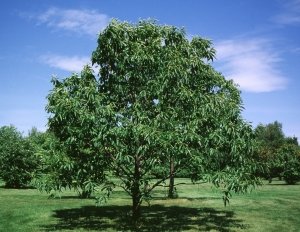
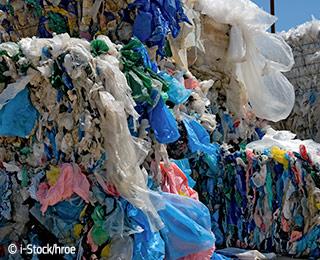
![Is [Climate change affects the gender of Sea Turtles] true or false? Is [Climate change affects the gender of Sea Turtles] true or false? - ProProfs](https://media.proprofs.com/images/QM/user_images/2755565/8736636294.jpg)

